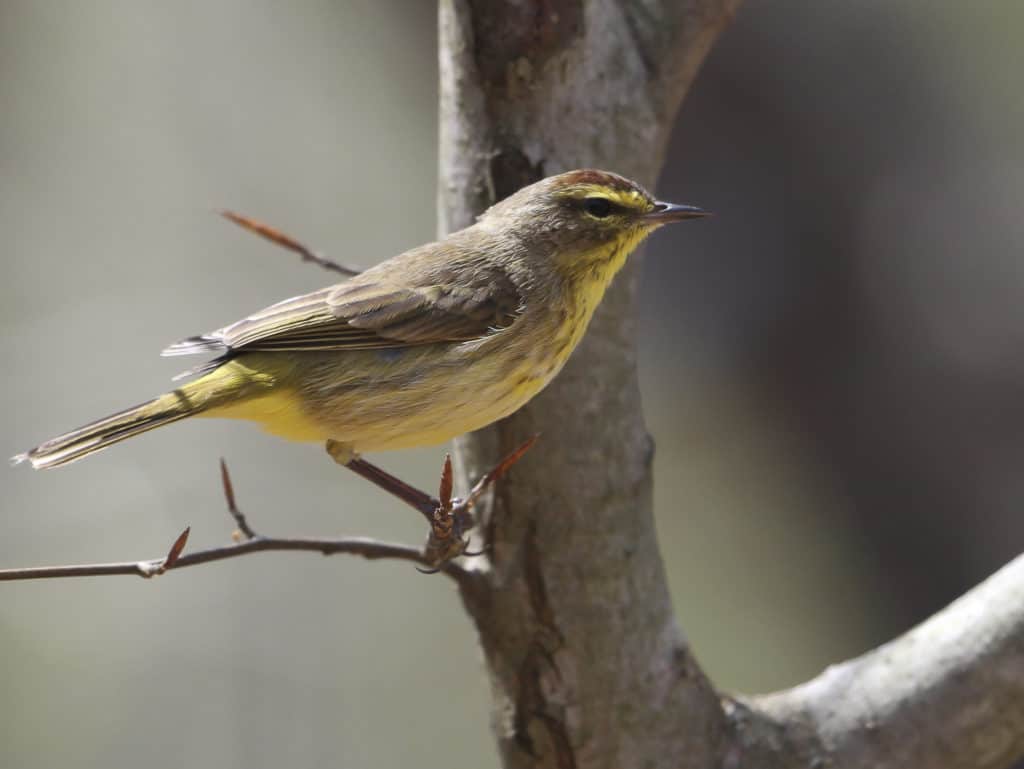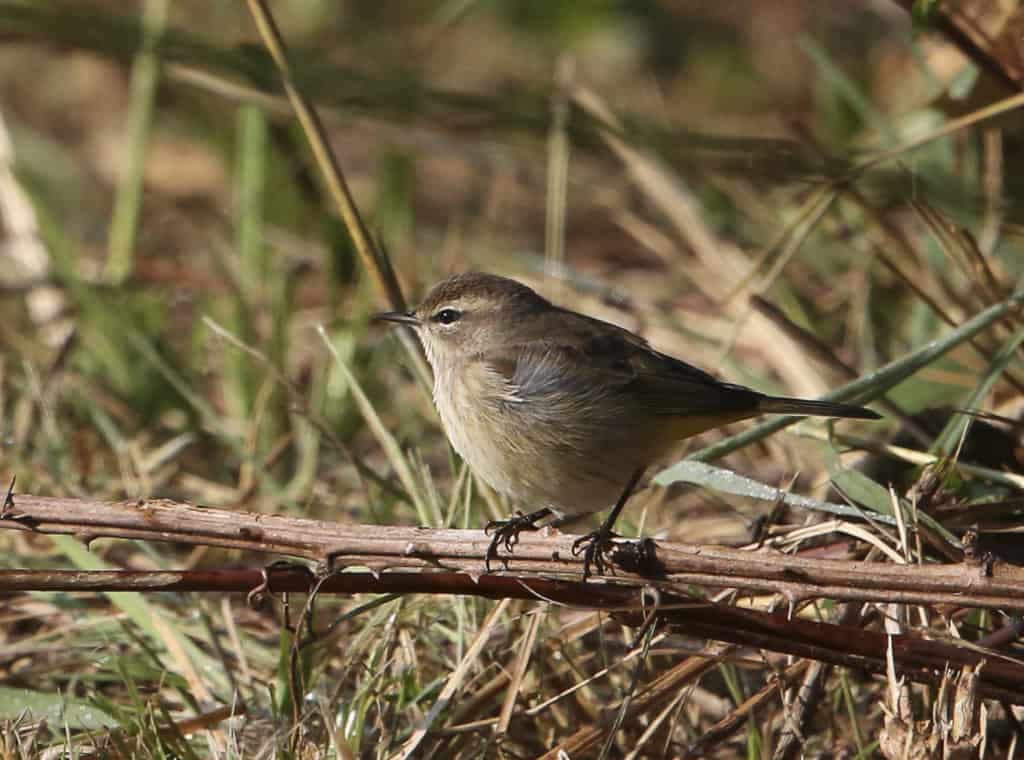Creature Feature
Tail-Wagging Warblers
By Wayne Bierbaum
With my glasses off I have pretty poor long-distance vision but when out for a hike I do not wear my glasses. I see and recognize animals by shape, color and distinctive movement. When I notice color or movement, I use a long lens on a camera or a pair of binoculars to take a better look. The lens and binoculars correct my vision by bypassing the bad parts of the ill-shaped cornea (astigmatism).
Today, I was on a walk along an uncut and overgrown field when a slightly yellow bird flew from a bush to the mowed ground about 60 feet in front of me. I quickly started considering what type of bird it was. From its size and posture, it was sitting quite tall, I had four possibilities. Then the blurry smudge I was looking at began moving in a very distinctive way which made it easy to identify as a palm warbler. About every five seconds, it wagged its tail down, then up, vigorously. The movement is so distinctive it is a giveaway for the ID as palm warbler.
Palm warblers are very common in the forests of the far north. They even live beyond the Arctic Circle with very few spending their summers in the U.S. They tend to feed on the ground and typically stay low in trees, like a robin. In the fall, vast numbers migrate through our region to their wintering spot along the coast of the Gulf of Mexico.
Many will travel on to spend winter in Cuba. They got their name because the first specimens were collected from Hispaniola, an island near Cuba, which is densely covered in palm trees.
The palm warblers are mostly insectivores but will also feast on berries. Like many migrating birds, they stop singing along their migration route but will make chipping sounds to each other to keep the flock together. They also are pretty drab when they migrate south but turn bright yellow with an orange-colored cap for their spring return and of course, males are prettier than females. These birds are also not very shy and are quite approachable; sometimes they actually may approach you.
There are other birds that wag their tails in distinctive ways, making their identification much easier. The common eastern phoebe and spotted sandpiper do a quick up-and-down tail wag. A whole species of uncommon birds called wagtails do their wagging side to side.
As with other warblers, the palm warbler numbers are reduced by habitat loss in Canada and in their wintering areas. Watch for the wagging tails of these birds as they migrate through the Chesapeake Bay area.


